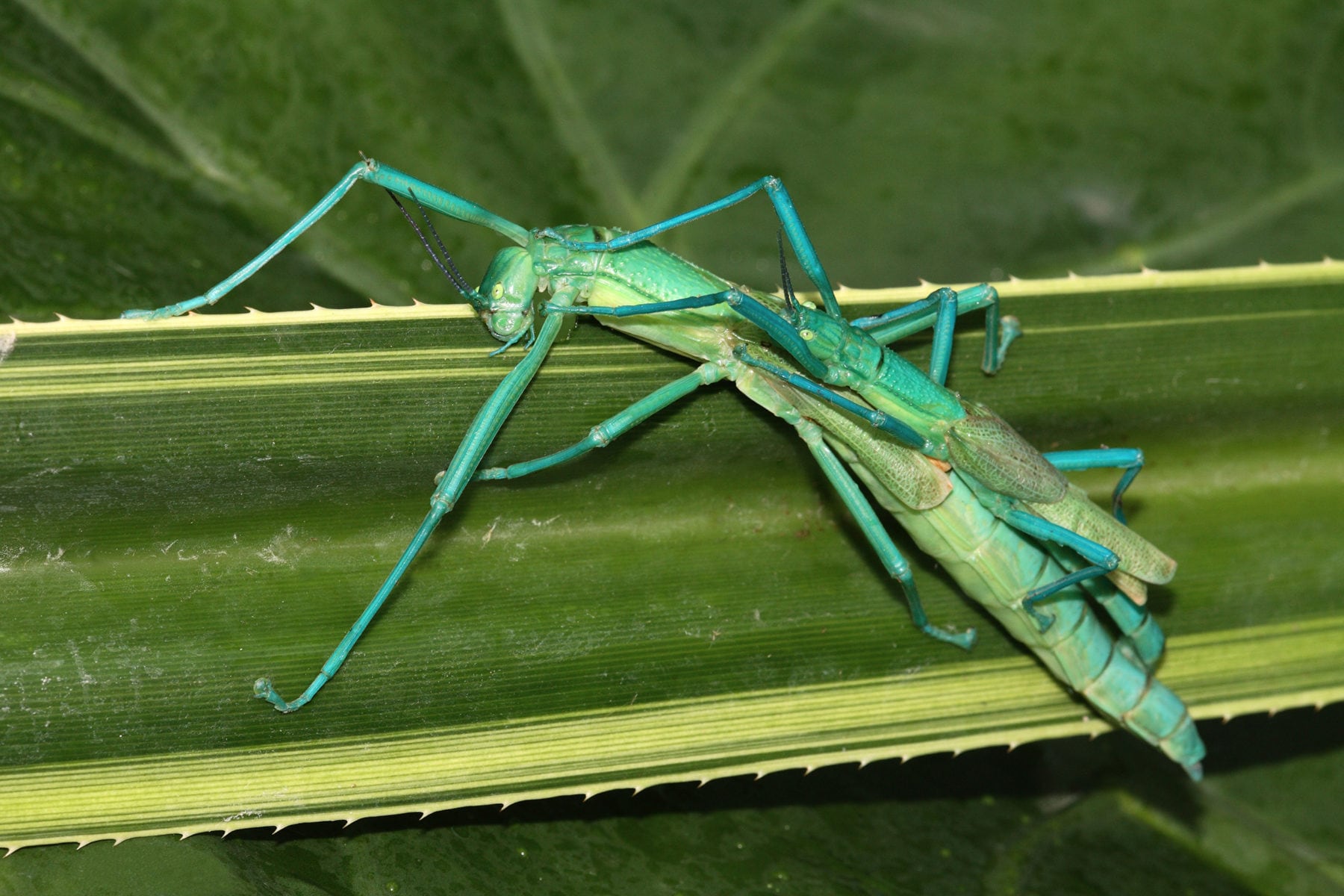“The goal is to study stick insects until I die”: Meet ‘stickman’ Braxton Jones

DEEP WITHIN Macquarie University’s biology building is a small, temperature-controlled room filled with never-before-described species of stick insects.
The insects belong to young phasmatologist Braxton Jones and many were collected from across Australia. Others were initially grown in his backyard, where he’d bred them as a hobbyist throughout his childhood.
“A lot of the insects are from tropical or arid environments so while I was doing my masters research, I took advantage of the space I had and set up the room to optimise their success,” he says.
Braxton’s love of stick insects began in 2005 after a trip to the CSIRO’s Discovery Centre in Canberra.
“They had a glass display of stick insects and I was immediately captivated,” Braxton says “I said to my Mum, ‘Can I have some of those?’. She asked the volunteers and they gave me two pairs for two different species, and I’ve been breeding them ever since. I still have that family and they’re now onto their 14th generation.”
Braxton is the first of his kind: he’s the only Australian scientist to dedicate himself wholly to the study of stick insects. In the past, others have treated it merely as a side project, preferring to focus on grasshoppers or other similar insects from the Orthoptera order.

Diversity of Australian stick insects equal to Borneo
Australia has officially described 200 species of stick insects, but Braxton predicts we have 100–200 that are yet to be described.
“Australia is a biodiversity hotspot, and that’s because we have deserts, tropical rainforests and everything in between, so although we don’t have as many species compared to Borneo, our diversity is just as good as theirs, if not better. And most of our species are endemic.”
Among those are the goliath stick insect (Eurycnema goliath), which is the heaviest in Australia, the titan stick insect (Acrophylla titan), which is the second largest and then there’s the longest stick insect in Australia, the gargantuan stick insect (Ctenomorpha gargantua) that was only discovered in 2006.
Australia’s stick insects are also known for their peculiar smells.
Braxton’s masters research focuses on the bright blue peppermint stick insect (Megacrania batesii). Found in the Daintree Rainforest, it sprays its predators with a peppermint-smelling chemical. There’s also the spiny-leaf insect, which smells like toffee, and other stick insects that are watermelon and potato starch scented.

As for beauty, the red-winged stick insect takes the cake with its glittery purple wings and bright green, chunky bodies.
And of course, there’s the Lord Howe Island stick insect, which could be more accurately described as a ‘land lobster’. The world’s rarest insect was famously rediscovered in the early 2000s. It was believed to be extinct for decades.

“They’ve been so neglected”
According to Braxton, stick insects are among the most well-known insects in Australia. “I would say more than 50 per cent of people have had them as kids or they’ve met them at school. It seems like everyone has a connection.
“Some people are scared but I’ve found that they’re still fascinated and still think they’re cool, unlike the cockroach, who gets a pretty bad rap.”
Despite this familiarity and affection, “they’ve been so neglected,” says Braxton, which is the story for many insects. And there’s much more to learn about these creatures, particularly how they’ll adapt under global heating.
“Stick insects generally have a high heat tolerance, but this January, one day was around 49 degrees, and they just fell from the trees due to heat exhaustion. The climate is going to be an issue for them, especially more endemic stuff that live in rainforests or mountain tops.”
Braxton is about to embark on his PhD at the University of Sydney where he’ll be looking at egg dispersal across the whole order (Phasmatodea) of stick insect, examining how they’ve been able to spread throughout the world.
After that, he’ll embark on a post-doctorate, again, based on stick insects and pursue any other way he can continue his research.
“The goal is to study stick insects until I die.”
A phasmatologist is someone who studies stick and leaf insects.




